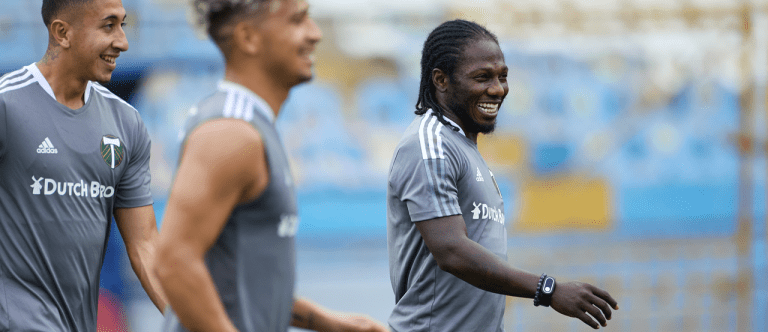The first year Major League Soccer existed during a Copa América, two players from the league made tournament rosters. Both played for D.C. United. Both represented Bolivia. MLS was less than a year old when South America convened for its 1997 confederation championship, but when it did, only Marco Etcheverry and Jamie Moreno represented the league at that tournament.
For most of MLS’s existence, that story went unchanged. Until Copa’s 2019 edition, MLS sent between zero and two players to compete for South American teams at the continent’s premier competition. The pair the league had at 2016’s Copa America Centenario, Seattle’s Nelson Valdez and Dallas’s Carlos Gruezo, matched a high that hadn’t been touched since 1999. Etcheverry and Moreno were the pair that year, too.
Over the last two Copas, though something has changed. Given MLS’s course, that change is not surprising. As evidenced in the mere size the league’s grow to (from 10 to 27 teams) and the salaries it can offer players, MLS has become a bigger, more attractive league. Perhaps as a result, the league had 12 players called up to the competition two years ago. This summer, that number is 16, and while that number may be inflated by this year’s larger-than-normal rosters (a COVID-19 precaution), there are 13 different MLS clubs represented in the tournament.
Coaches like Portland’s Giovanni Savarese have to deal with the duality of that representation. Though players being called in reflect the league’s growth, games continues. Teams like the Timbers have to compete without some of their most talented players. For Savarese, though, that representation is an easy tradeoff.
“Maybe because I was a player, I can understand better these situations,” Savarese, a former Venezuelan international, said. “You cannot deny [them] this moment: that they have the opportunity to participate in Copa América; that they have the opportunity to be able to represent their country and be in very high competition, with a confederation that is a very tough one.
“You want to be part of it. You want to represent your country, and you want to compete in these games - to know that you can participate in the Copa America. We have to understand their excitement.”
As MLS’s contributions to Copa have increased, so have the Timbers’. In 2019, the team sent a player to a South American team in Copa for the first time. Andy Polo played for Peru. This year, Portland is one of the three teams (with Atlanta and Orlando) to have multiple players in the competition, but there’s another layer of history, still, to the recalls of Yimmi Chara and Felipe Mora. Colombia had never rostered an MLS player for Copa before Chara. Chile had never rostered an MLS player for Copa before Mora.

With the knockout round of this year's tournament approaching, Chara’s and Mora’s experience reflects how difficult it is to break into those national teams. Chara played 21 minutes in Colombia’s last game while going unused in his team’s opener. Mora has yet to see the field. Savarese conceded that, for his players to stay, “competitive,” he “wish[es] they can play a little more.” But thanks to their spots in their nations’ squads, the South American nations that haven’t had an MLS presence at Copa América has been cut in half. Whereas before this year’s tournament that list was four, it’s now down to Argentina and Brazil.
“The fact that there are two players from Portland in two of the best national teams in South America right now, I think it says a lot about what the Portland Timbers are doing,” Savarese said, “and where the league is at the moment, as well.”
FIFA’s world rankings aren’t a perfect tool for assessing the strength of a country’s national team, but they’re fine if you consider them a general idea. For Colombia, Cafeteros have not finished lower than 13th at the end of a calendar year since 2011. Four times in that span, they climbed as high as third in the world. They’re 15th, now. In Chile’s case, the country currently sits 19th and, since 2013, has not finished a year ranked lower than 17th. In that time, they’ve won two South American titles.

For Chara and Mora, making it to Brazil for this year’s tournament is an accomplishment. And for their league and team, their callups are a benchmark, as well as a sign of progress. Had all the initiatives MLS undertook over the last decade failed to raise the league’s quality, it would be fair to ask, “to what end?” Perhaps it’s still fair to do so, but to the extent more teams and roster spots, more Designated Player slots and hugely increased Allocation Money budgets can bring talent to the league, it makes sense that increase would be seen in places like Copa América.
The Timbers reflect that. Being able to attract players like Chara and Mora not only complements the Diego Charas, Diego Valeris and Sebastián Blancos of the roster, but in the case of Yimmi Chara’s selection, it reflects Portland’s commitment to the Colombian market. Diego Chara was the team’s first Designated Player in 2011. He is now one of the most important players in the history of the club, but he wasn’t the only Colombian to arrive early in the MLS era. Jorge Perlaza scored the firstm home goal of Portland’s MLS era, Hayner Mosquera played a significant role in 2012, while Dairon Asprilla has become a long-term contributor to the club. As talent from places like Argentina has become more available, Portland’s pipeline to Colombia has been used less often, but in terms of getting a player like Chara into a Copa America squad, the significance of that pipeline continues.
In that sense, the Timbers’ connection to this Copa is emblematic of the rest of their league’s. The quantity has increased, but so has the magnitude of the players, too. Perhaps a couple of countries are still holdouts when it comes to the league’s influence, but since the days of Etcheverry and Moreno, it’s hole in Copa has blossomed.












